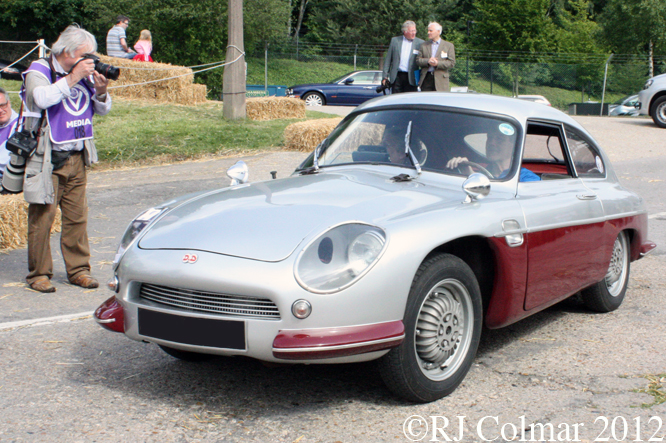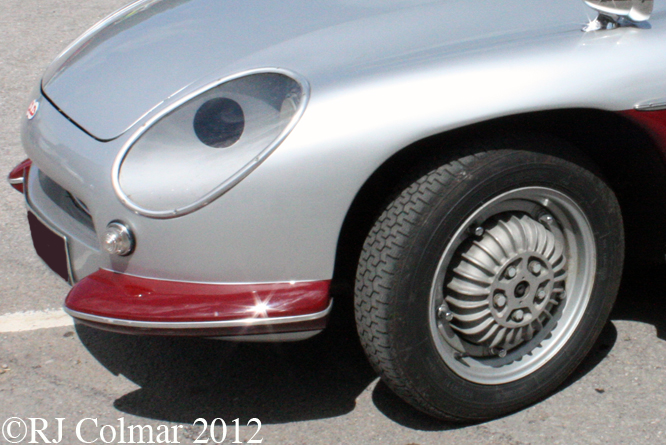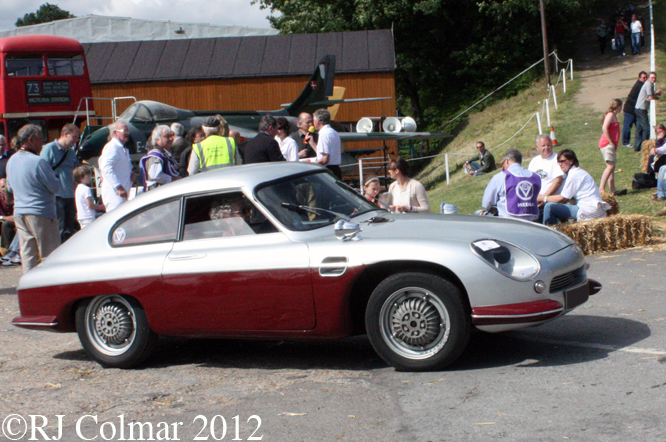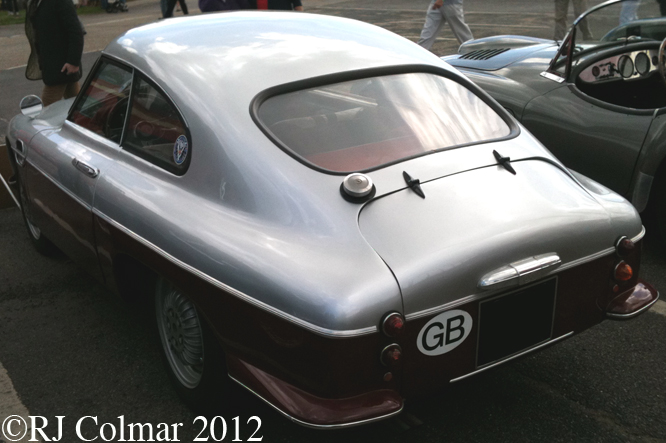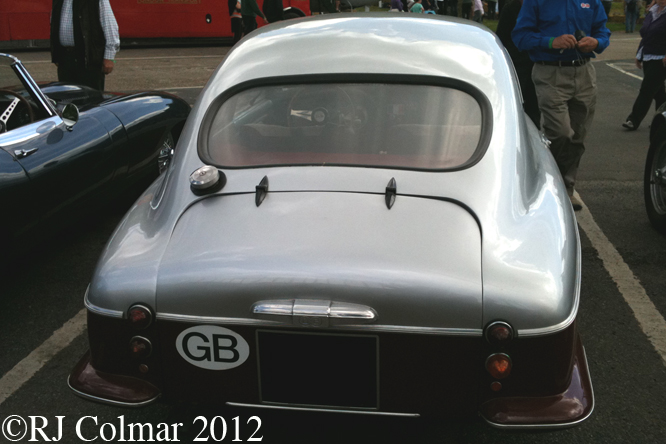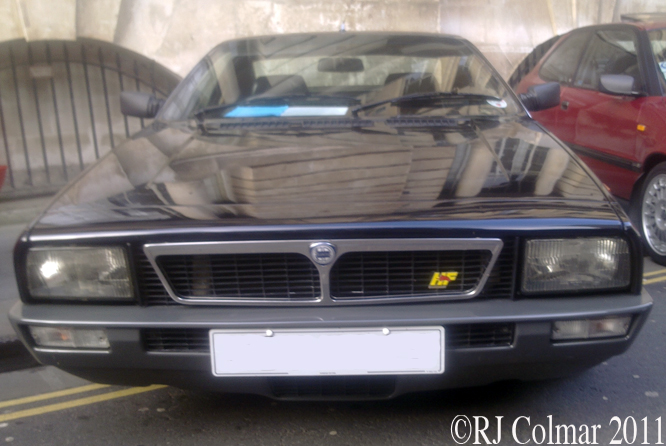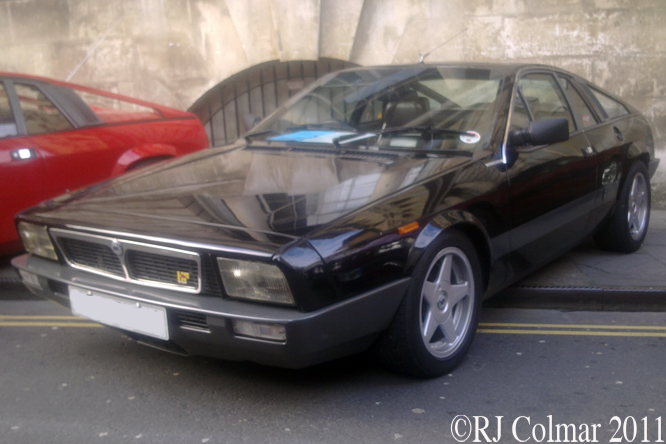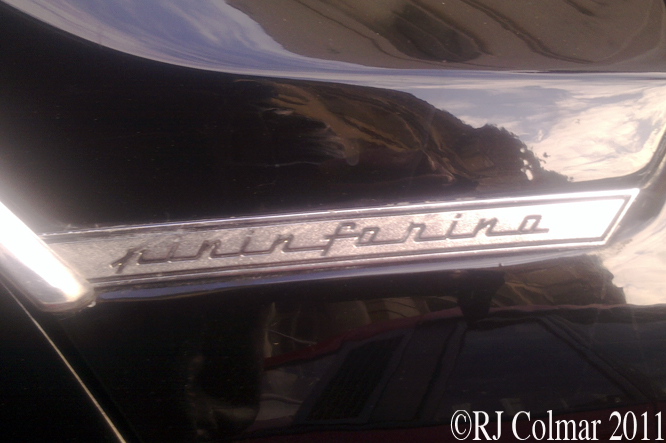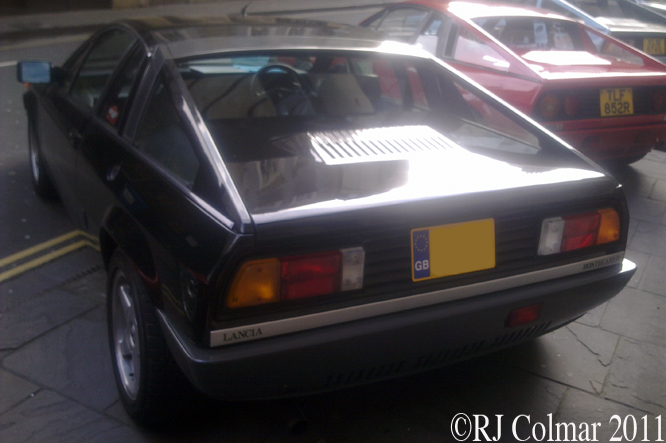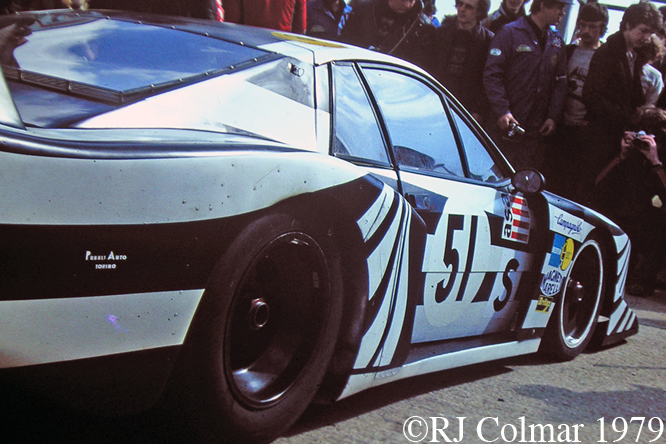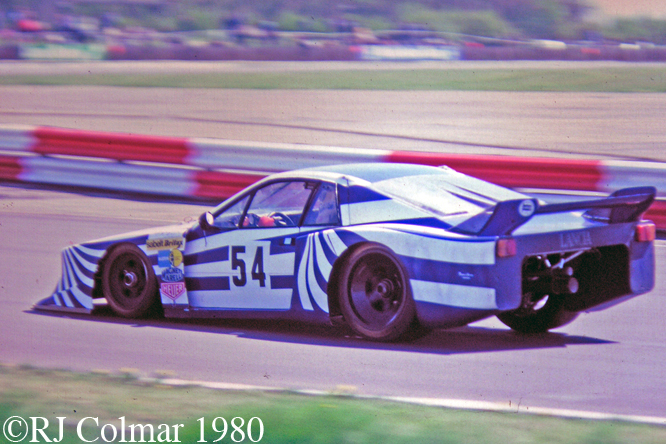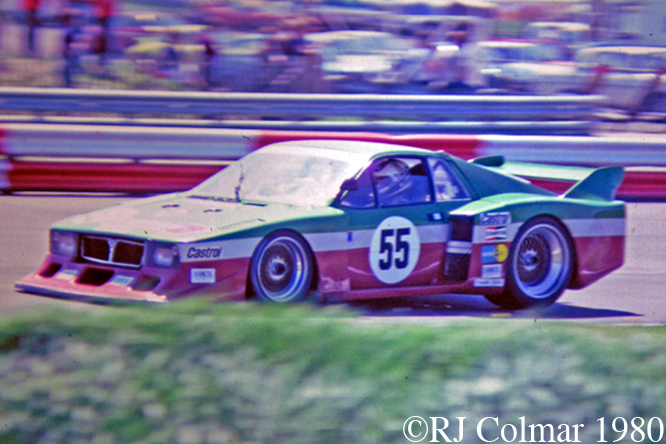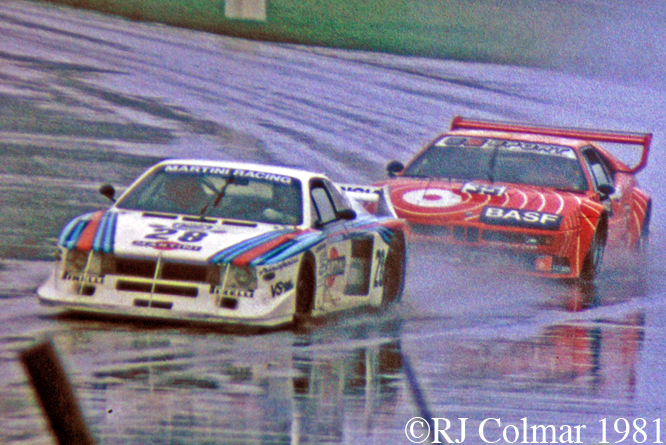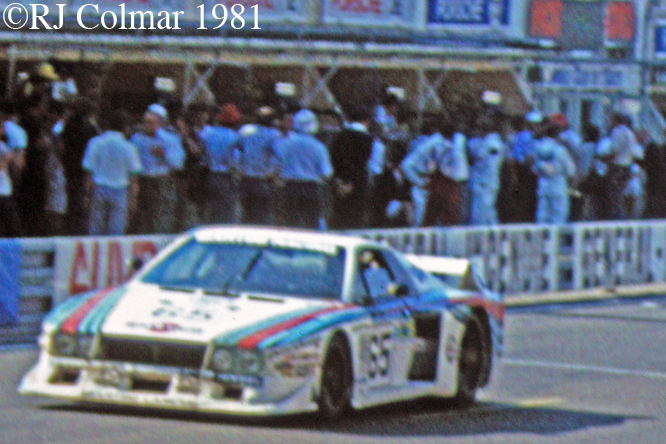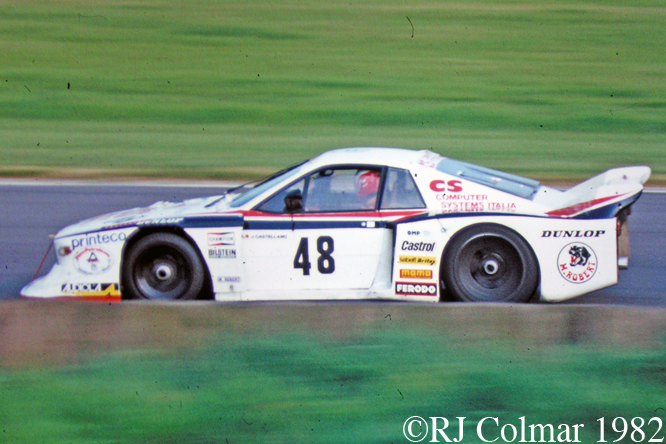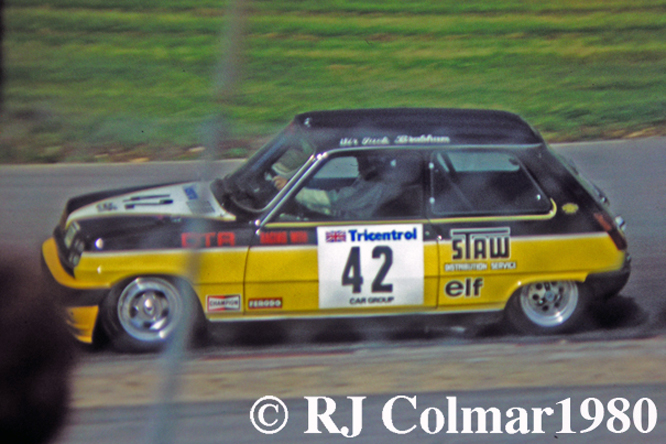When Richard Jenvey announced that he would be competing in the 2 litre / 122 cui division of the Group 5 World Manufacturers championship with a Lotus Esprit in 1978, such was my naivety that my heart leapt with joy at the prospect of the domination that BMW had enjoyed in this class with the brick like BMW 320i would at last be broken by a proper sports car.
Richard made a name for himself driving modified sports cars including a supercharged MG Midget in ’73 and a Lotus Elan from ’74 to ’75 winning the 1975 Modsports Championship. In 1975 Richard also started racing in the European Sports Car Championship with the unique Vogue 2 litre / 122 cui sports car a car he eventually bought, modified and sold to team mate David Mercer.
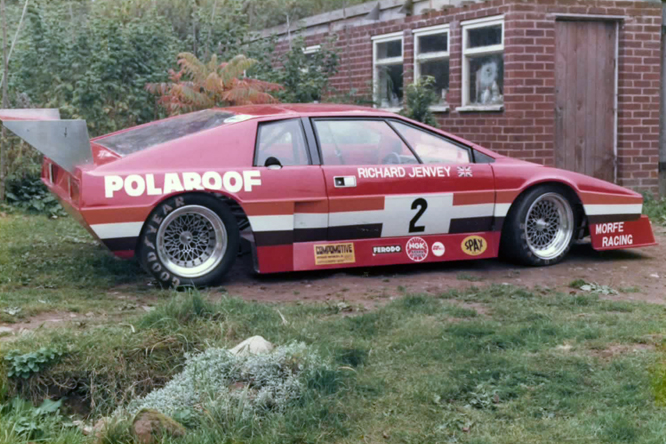
Photo Courtesy Richard Jenvey Copyright 1979
With a group of enthusiastic amateurs Richard set about building his Group 5 Lotus Esprit in 1978. The team retained most of the original Lotus backbone chassis and built a monocoque around it effectively turning the Lotus backbone chassis into a passenger.
Richard tells me that when the Lotus Sales Director approached Colin Chapman to support another team about building a similar car Colin Chapman hit the table so hard to emphasise a negative response that his coffee cup jumped off the desk. When the Sales Director made a second approach, on behalf of Richard, Colin appears to have learned a valuable lesson and relented agreeing to supply enough parts for Vegatune to build a 270 hp 2 litre / 122cui engine on favorable terms. Lotus also supplied an Esprit body shell with which to make the mould for the racers body. The original body shell was then sold on which helped cover ‘a fair fraction’ of the costs of building the car which ended up right on the minimum weight limit.
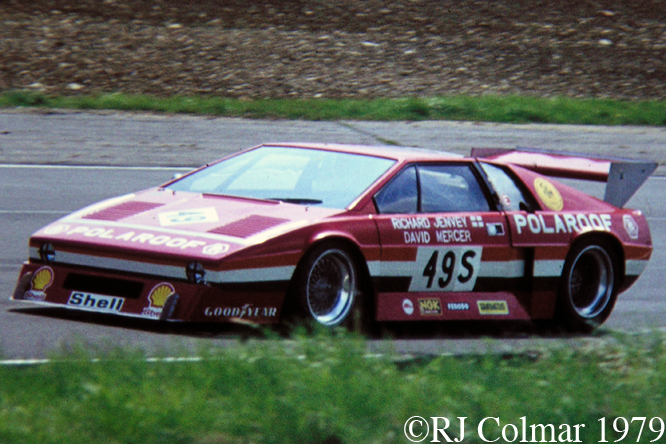
The Polaroof Morfe Racing Lotus Esprit first appeared at the Dijon 6 hours in April 1979 qualifying first in class ahead of a Fiat X1/9 and BMW 320i, but was the first of the three to retire from the race with engine maladies. At Silverstone, where the car is seen above, the Esprit qualified 3rd in class behind the debuting Lancia Beta Montecarlo turbo and an older BMW 320i. During the race Richard and David Mercer only had to finish to win the class but distributor problems saw the car retire.
Over the following two years Richards Lotus made at least seven further starts in World Championship and German Championship events recording a best 7th place finish in the 1981 German Championship round at Zolder. Once the engine was reliable little problems continued to beset the Esprit including seat padding slipping which caused Lawrie Hickman to inadvertently break the gear linkage in his efforts to avoid an accident at Dijon. On another occasion with in a couple of miles of the finish flag and a class victory at the Nurburgring, where the start money was always very generous, a loose alternator wire, combined with running with the headlights on, flattened the battery and officials prevented Richard from connecting the spare which the car carried.
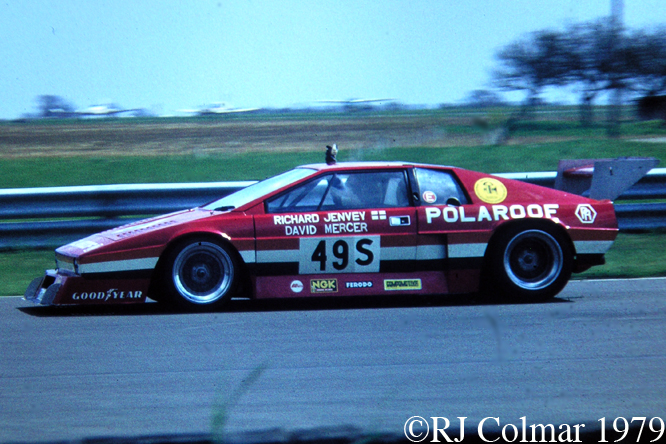
Richard and Lawrie Hickman, who co drove Richards Lotus in 1981 agree that the Esprit was fabulous to drive but was underpowered against the factory turbocharged Group 5 cars running in the same class from Lancia, BMW and Ford which had over 600 hp available ! Interestingly as the Group 5 series was coming to an end Richard started building a turbocharged Group C car, which was never completed due to a late change in the regulations and Richard had plans to run the Lotus with the turbocharged motor from the Group C project before it was retired.
Unfortunately these plans also came to nought when a batch of faulty con rod bolts failed while the normally aspirated motor was being ‘run in’ during practice for the 1981 Silverstone 6 Hours, causing the team to miss the race and starting money. Even more importantly the engine failure also caused the team to miss collecting the ‘very generous’ start money at the Nurburgring two weeks later and so the Esprit retired without ever running with the more powerful motor.
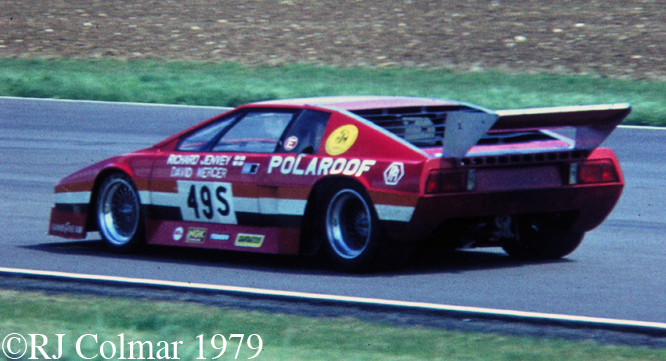
Richard still owns the Esprit which he describes as being “spread around Shropshire”, he is currently engaged in re-accumulating all the parts in one place with a view to either selling it or building it for his son, Mike Jenvey, to race in classic events.
Regrettably, although the Esprit added welcome variety to the events in which it competed, the privateer Morfe Racing with Polaroof team, like the contemporary Janspeed Triumph Twin Turbo TR8 team did not have the level of backing to compete reliably let alone competitively against the works supported outfits of Lancia in the World Championship events which were joined by Ford in the German Championship events.
The photo’s show the Esprit’s official “roll out” to the raspberry patch in Richards garden and the remainder the Esprit’s British debut at Silverstone in 1979.
My thanks to Richard Jenvey who kindly answered my questions about the project, also to The Nostalgia Forum regulars Alan Raine, who suggested I get in touch with Richard, Tony “Giraffe” Gallagher who kindly passed on Lawrie Hickman’s observations, Norman Jones, fausto, Simon Hadfield, fatbaldbloke, Jesper O Hansen, Edward Fitzgerald, La Sarthe, Simon Lewis and Tony Kingston for their comments.
Thanks for joining me on this ‘Jumping Coffee Cups !’ edition of ‘Gettin’ a li’l psycho on tyres’, I hope you will join me again tomorrow. Don’t forget to come back now !

